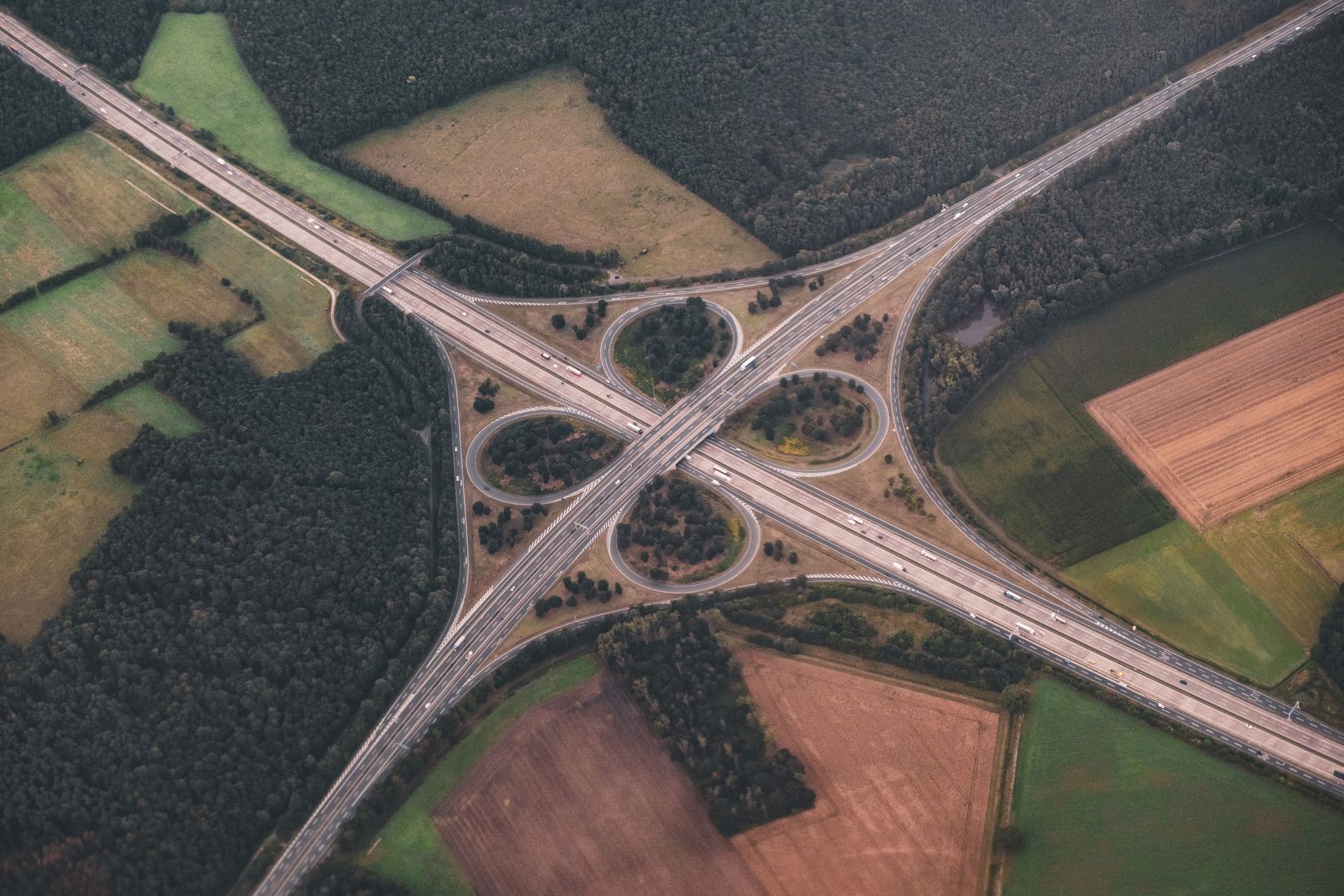Germany Traffic Guide
Road Traffic in Germany
In addition to interesting cities, Germany also offers picturesque mountain ranges in the south, idyllic villages inland, and relaxing coastal areas along the North and Baltic Seas. However, public transport is not always available, especially in rural regions. Therefore, to fully and authentically experience Germany, traveling by car is often the best option.
In this guide, learn more about the key traffic rules in Germany and the conditions of the roads.
Overview of Traffic Rules in Germany
- Driving is permitted in Germany from the age of 18. As a member of the European Union, an EU driver's license suffices as a driving permit.
- Traffic in Germany drives on the right-hand side. Unless otherwise indicated, the right-before-left rule applies for giving way. Overtaking is generally only allowed on the left.
- The speed limit within urban areas is a maximum of 50 km/h. Outside urban areas, up to 100 km/h is allowed. On divided highways, an advisory speed limit of 130 km/h applies.
- Germany is the only country in the world without a general speed limit on highways. On many highway sections, a maximum speed (often between 90 and 130 km/h) is displayed on signs above the roadway. If no speed is indicated, you can drive as fast as conditions allow, but it is recommended to adhere to the advisory speed of 130 km/h.
- Seat belts must be worn in Germany.
- The driver is not allowed to use or hold a mobile phone while driving. Thus, calling is only permitted using a hands-free device.
- The use of radar detectors is prohibited.
- Lights must be turned on in Germany in darkness, poor visibility, and in tunnels.
- A high-visibility vest, a warning triangle, and a first aid kit must be carried in the vehicle. Vehicles over 3.5 tonnes must also have a warning light.
- The alcohol limit for drivers in Germany is 0.5 per mille. Individuals under 21 years of age and novice drivers in their probationary period are not allowed to consume any alcohol before driving.
Driving in Germany
The Roads in Germany
Germany boasts a comprehensive and well-developed road network, with predominantly paved roads. Unpaved paths are rare and typically only found in particularly remote areas; they can generally be easily avoided.

The major cities in Germany are connected by an extensive network of motorways, with notable gaps primarily in the Northeast.
Generally, road traffic in Germany is well-regulated. However, on heavily trafficked motorways and in urban agglomerations around large cities, congestion and erratic traffic can occur.
The condition of the roads in Germany is predominantly good, allowing for smooth and trouble-free travel by car from one location to another.
Petrol stations and charging points
Petrol and Diesel: The network of petrol stations is comprehensively developed across Germany. In many cities and along the motorways, stations are typically open 24/7. However, the prices for diesel and petrol are slightly higher than the European average. To save money on fuel, it is advisable to avoid petrol stations located directly on motorways.

Electric Cars: Germany already has a solid network of charging stations that is continuously being expanded. Most charging options can be found along main traffic routes and in larger cities.
In small towns and rural areas, charging stations are somewhat less common but are still available. As in most countries, it is advisable to research charging options along your route before embarking on longer trips.
Hydrogen Cars: Germany has over 100 hydrogen fuel stations, making it the leader in hydrogen infrastructure in Europe by a wide margin. Hydrogen stations are primarily located in large cities. The network is still expanding and is far from being comprehensive across the country.
Rental car or own car?
Germany, with its nine neighboring countries, is the European nation with the most bordering states and occupies a central position on the European continent. This makes it easily accessible by car.
To enter Germany by car, you must be able to demonstrate that the vehicle is covered by liability insurance. For vehicles from other EU countries, the Euro number plate with the country code is sufficient. Drivers from non-EU countries must present the International Insurance Card as proof of liability insurance and must display their country code on the car in another form.
Additionally, you can choose from numerous car rental companies in most cities and at international airports. To rent a car in Germany, you generally need to be at least 21 years old and have held your driver's license for at least one year. Some providers also rent vehicles to people aged 18 and over. For certain classes of vehicles, the minimum age requirement can be significantly higher.
Fines
For traffic violations, the police can issue on-the-spot fines. For foreign drivers, the police may also require a deposit to ensure payment of the fine at a later date.

Here is an excerpt from the penalty catalog:
- Speeding: 30 to 800 Euros (approx. £25 to £680)
- Seatbelt violation: from 30 Euros (approx. £25)
- Illegal parking: 10 to 110 Euros (approx. £8 to £95)
- Driving under the influence of alcohol: 500 to 1.500 Euros (approx. £430 to £1.280)
- Running a red light: 90 to 360 Euros (approx. £80 to £310)
- Using a mobile phone while driving: from 100 Euros (approx. £85)
Depending on the severity and consequences of the offense, additional penalties such as a temporary or permanent driving ban, and monetary or prison sentences may also be imposed.
Conclusion: Getting Around in Germany by Car
On German roads, you can generally make good progress. Whether with a conventional internal combustion engine, an electric vehicle, or a hydrogen car, you will find ample refueling and charging options, allowing you to thoroughly and comfortably explore the country from the coast to the Alps.
► Here you can find more information about toll regulations in Germany to be optimally prepared for your journey.






